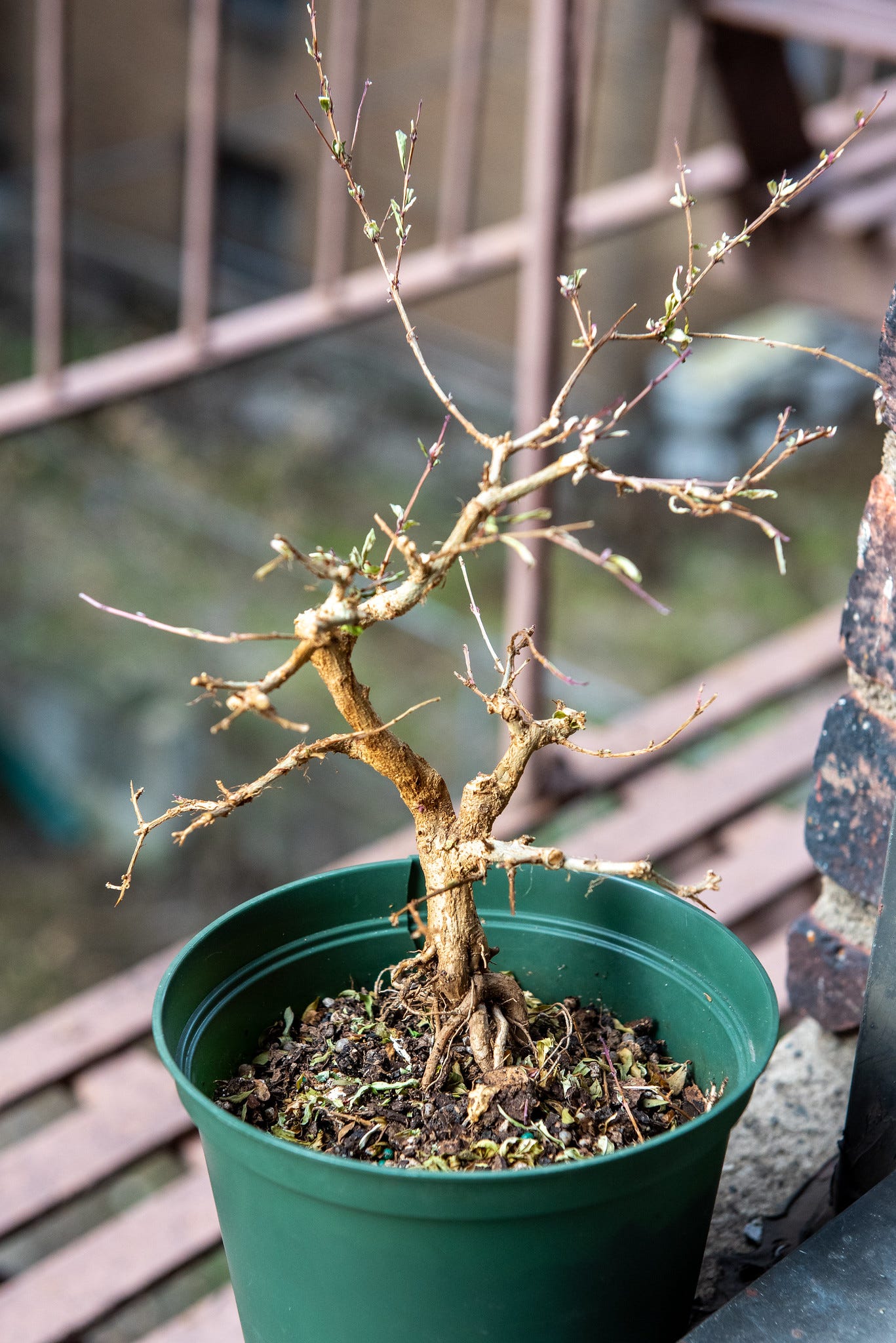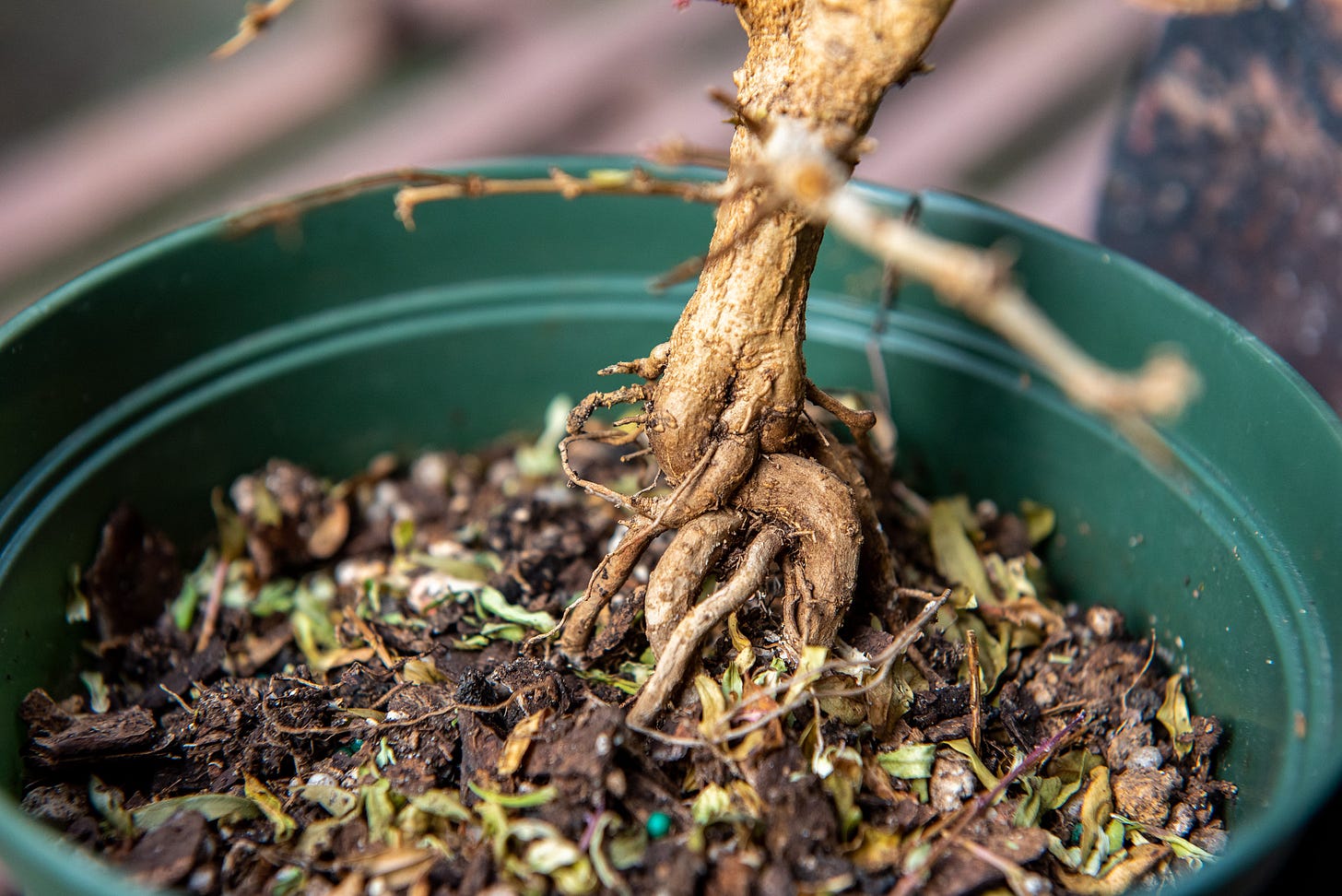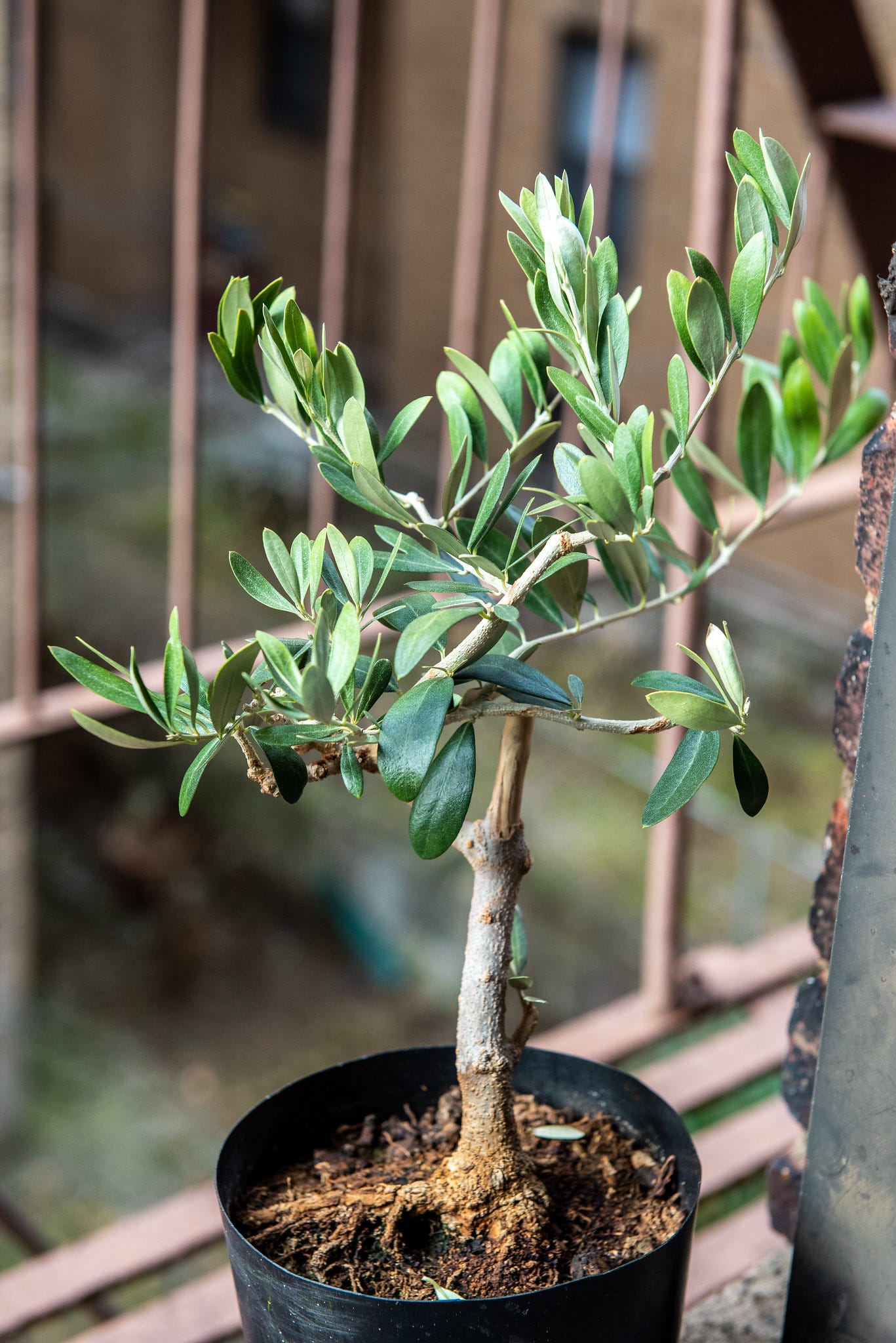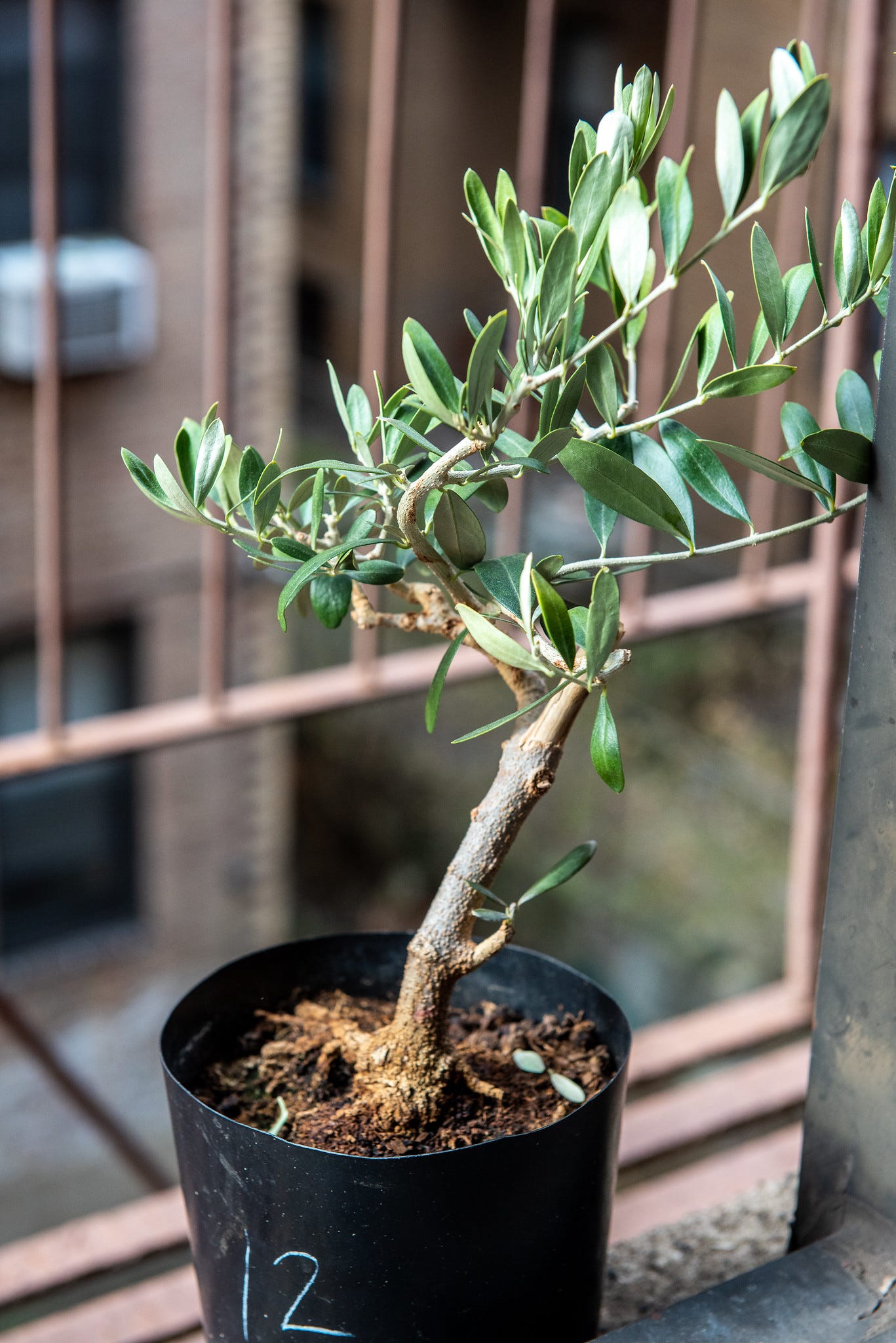A change of perspective
Why it pays to keep a beginner’s mind.
A hard freeze killed off the leaves on my pomegranate, affording me a better view of its silhouette.
Bonsai are three dimensional miniatures and are styled to be viewed that way, but all bonsai have a “front” that 1) presents an optimal focal point for encountering the tree and 2) yields to a “back” where you can hide large structural chop scars.
The photo above shows what I’ve considered the front of this pomegranate during its development. It has some things going for it. The root base looks nice from this view and the spindly branches lend the tree a storybook quality. But it’s flat. All the trunk movement happens in a two dimensional plane, which makes it look artificial. More damning, the tree lacks coherent narrative.
The tangle of exposed roots suggests an eroded soil, perhaps weathered by harsh elements. The trunk rises from this root base with strong, upright character, then splits into three leaders that each go their own way, irrespective of the other two. In nature, branches grow away from each other so they don’t compete for light. The first trunk split makes sense, but then why would the main trunk on the left swing back towards the right? And if that trunk is to overhang the branches below, where do I take the tree from here? Turn it back on itself again?
“Don’t make your tree look like a bonsai,” the artist John Naka said. “Make your bonsai look like a tree.” Even if we can’t articulate the natural tendencies of trees, we can intuit when a bonsai design breaks them. This suspicion has been nagging me for months, but I’ve had no clue what to do about it. I distracted myself with other trees because I didn’t even want to consider my possibilities. The problematic pomegranate loomed at me from its windowsill perch. When watering, I avoided eye contact.
Then one day, while inspecting the pot up close, I saw it. The most obvious move possible, crushing in its clarity. I’m embarrassed I didn’t think of it sooner.
All I did was rotate the pot 90 degrees. And yet! The elegance! The grace! This is a tree that tells a story. Now the left and right branches make sense; they move away from the main trunk and each other. They’re still in a two dimensional plane, but in a way that’s easier to fix. I needed a different point of view to see it.
This new front will cost the lowest branch, which now points towards the viewer like an accusation. Come spring I’ll remove it when I untangle the exposed roots and repot it in bonsai soil. Then it might start to look like a tree.
Success with the pomegranate gave me an idea. Remember my uncooperative olive? Talk about a tree with no story! What a mess of directions and ideas it is.
Here’s the tree rotated 90 degrees. Another improvement, I think. You can see all the movement in the lower trunk, and how the new leader arcs back to continue the broken trunk’s trajectory.
See the long, fleshy root shooting off the nebari? I always thought that was an element of the tree worth highlighting, which guided me toward the first orientation. But it’s just an interesting feature. It doesn’t contribute anything to the tree’s story, or harmonize with its other elements.
I had the same sticky thought about the pomegranate, that all three main leaders had to be in view. I never considered cutting one off to strengthen the look of the other two. With enough time, these rough ideas for what the trees could look like turned into defining pictures of what the tree must look like.
Of course a tree doesn’t have to look like anything. It’s a tree, and trees in the real world don’t have fronts or backs. A no-duh revelation that’s easy to overlook when lost in the weeds, and a reminder that a beginner’s mind takes work to maintain.
To view a tree with a beginner’s mind is to consider the possibility of other perspectives, because you’re not locked into one of your own. You encounter the tree, then circle it, exploring its nooks of interest. You let the tree tell you where to direct your eyes, not an abstract design for how the specimen should be viewed.
A display position that worked at one point of a tree’s life may be inadequate for its next stage of growth. If I don’t allow myself to see it—if I hold on to branches and roots that are important to me only because I’m used to them—I may wind up holding the tree back. There’s always time to let go.
Tree reading
My friend Alex has written and illustrated a beautiful book called Please Grow: Lessons on Thriving for Plants and People. It’s now available for pre-order. If the cover art doesn’t win you over immediately, this video peek will. [Instagram]
Resurrection and renewal in a coleus houseplant. [The Cleaver and the Butterfly]








My girlfriend told me we were getting an olive tree for our apartment, and I thought for sure it would be dead in a week. It is thriving to spite me.